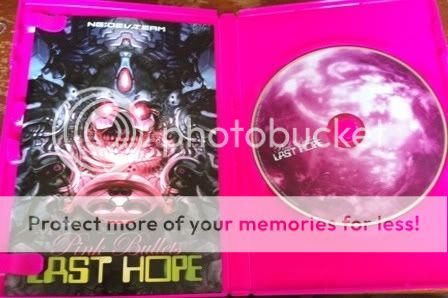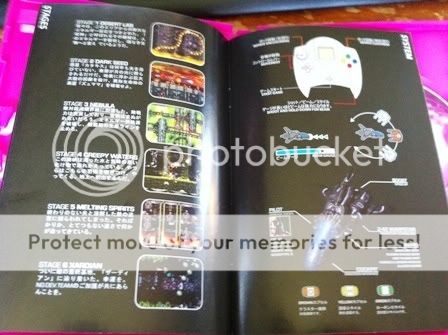|
So I have not published a post to this blog that was actually on topic since the joint entry by noiseredux and I back in June about the GBA launch , and hopefully I can get back to some more blogging about launch games and end games this year...
One entry I am planning on writing is on the U.S. launch of the PlayStation Vita, which I am excited about and have preordered along with a few games. One phenomenon that hasnt really been explored in the blog, however, is what happens with a systems library when it is about to be replaced. That is the focus of this entry.
The Sony PSP has had an odd life. It has certainly been the most successful handheld of all time that was not made by Nintendo, and it was about as big of a success in its native Japan as it was a flop here in the United States. In the U.S., many pointed to the relative ease of piracy as the undoing of the system, as newly released games could be easily downloaded and played by anyone with minimal know-how and a web connection. It also earned a bad reputation for controls, since the large majority of Western genre games that were promoted in the U.S. traditionally relied on the use of two analog sticks on consoles (one for movement and one for the camera), and thus developers had to create workarounds of varying success on the PSP hardware.
What ended up happening, then, was that the PSP largely failed to reach the core demographic of gamers in the U.S. Instead, it became a haven for niche, older-style games and Japanese ports. It became the platform with definitive versions of games like Castlevania: Symphony of the Night and Final Fantasy IV. It became the platform with a lot of content-packed special editions by RPG powerhouses like Atlus and NIS, and it became a great place to pick up retro compilations. It catered to an audience that traditionally purchased its games (collectors), and gamers that were just at home with a D-pad as with a pair of analog sticks. So while the PSP had some amazing graphical showcase titles such as the God of War games and Resistance: Retribution, it is the more niche titles like Half Minute Hero and Prinny that make the platform an interesting one for collectors and will give the PSP staying power as a portable worth keeping around and accumulating titles on for years to come.
Which brings me to my central point: right now is the time to build your PSP library. I have spent some time over the holidays collecting titles that I missed out on or had sitting in my want list for several years, and the rock-bottom prices have been quite startling. Recently released games like Tactics Ogre: Let us Cling Together, Knights in the Nightmare, and Parasite Eve: The Third Birthday can frequently be found for under $10 new at GameStop and Amazon. Complete used copies of games from the first few years of the PSP's life are regularly found from $3-$7 a piece right now (both online and offline), and even the priciest domestic games rarely see price points over $20-$30. In the past few weeks I picked up about 25 PSP games, including three Special Editions of some well-received RPGs, and have spent barely $200 in total. People are dumping their libraries in preparation for the Vita and stores are clearing out UMDs to make more room for better selling titles; as a result this is the prime time for collectors to be picking over the spoils, as PSP games generally didnt sell very well, were produced in limited numbers, and had a small following. If I had to guess, I'd say that most PSP games will be, in general, more expensive in another year or two than they are right now. Strike while the iron is hot!
Although homebrew console games are a phenomenon that have been with gaming for decades, the relatively recent popularity of emulators and the web itself have created a rich environment for an ongoing renaissance in self-made games. Almost every classic game system has enjoyed an assortment of wonderful homebrew games over the past decade, including those that have seen official releases in formats original to the systems that they are created for. Since this blog attempts to chronicle games released both at a system's launch and a system's end (and beyond), these games are a natural fit.
Last Hope is an especially interesting candidate, as it is not only a "last" game for one particular console, but for three. Developed in 2006 by NG:DEV.TEAM for the Neo Geo, Neo Geo CD, and Dreamcast, Last Hope is a horizontal-scrolling shooter that borrows obvious inspiration from games like IREM's R-Type and Aicom's Pulstar. More polished and better produced then a majority of homebrew games, NG.DEV.TEAM's game was generally well-regarded by consumers and reviewers alike. Furthermore, the most common complaints about the game (the difficulty, the tough-to-discern appearance of various objects, etc.) were addressed in an updated 2007 release for the Dreamcast entitled Last Hope: Pink Bulllets.
One of the most impressive feats of this release is that NG:DEV.TEAM made an effort to mimic the standard packaging for each of the ports of the game. This adds to the overall sense of high production quality found in the game itself, and rounds out the full package nicely. Because the AES carts were prohibitively expensive to produce, only 60 were made and sold, for around $700 each. Because of the rarity, prices for the game have gone upwards of $1000+ in the time since. The Neo Geo and Dreamcast versions were available for closer to $30-$50 each, depending on whether the standard or limited edition (with a soundtrack) was purchased. All versions of the game were region free, so they could be played on any system.
Here you can see what each version looked like (sorry for the watermarks, but I don't have my own copies of these.)
 The Neo Geo AES cart, box, and manual  The Neo Geo CD case, disc, and manual  The Dreamcast case, art, and manual
The version I own is the aforementioned Pink Bullets update for the Dreamcast. For this release, NG:DEV.TEAM opted to go with a pink DVD-style case instead of a standard jewelcase. I can't say I am a big fan of the redesigned packaging since I like my Dreamcast games all to look the same on the shelf, but the general quality of the paper, printing, etc. is still high.
 The inside of the Pink Bullets edition of the game
As an "end game," there are several things worth noting about Last Hope:
The old-school look and feel. Since the game was designed for the Neo Geo and then ported to the Dreamcast, the game retains the style and appearance of other shooters from the early 90s. What that means is that the Neo Geo ports are some of the better looking shmups available for the system while the Dreamcast port is one of the least visually impressive shooters available for that console. The game also plays like those other "tactical" shmups that inspired it: it is a tough game that will leave even veteran gamers muttering obscenities at the screen.
The soundtrack. One aspect of the game that received almost universal acclaim was the soundtrack by composer Rafael Dyll. Full of creatively employed, sweeping synthesizers and strings, the game is a joy to listen to. Since the Dreamcast version was published on a CD-ROM instead of a GD-ROM, it can be listened to on a CD player. Dyll has since gone on to produce the excellent soundtracks for both Soldner-X games.
 Dreamcast features are listed on the back of the box
The extra touches for the Dreamcast. Since I only have the Pink Bullets edition, I can't comment on how well the game takes advantage of the tech available on the Neo Geo systems. What I can comment on is the ways in which the game includes features that highlight the strength of the Dreamcast. For one, the game includes VMU support as some graphics are displayed on the screen and scores can be saved. It also supports the use of a VGA box, something that wasn't true for all DC games. Perhaps most importantly, the game provides support for a Dreamcast arcade stick should the player wish to use one. I found that the standard DC controller worked well as you could use the L and R triggers to rotate the pod on the outside of the ship clockwise or counterclockwise, something that feels awkward on an arcade stick but natural on the DC controller.
 The Dreamcast manual
Last Hope is not ever going to be mistaken for one of the greatest shooters ever, but it is one of the best post-system life-cycle shooters I have come across thus far. It seems that NG:DEV.TEAM is dedicated to producing high quality work and the success behind a release like this will help keep the Neo Geo and Dreamcast viable as platforms to receive new games. And while it is technically a homebrew game, it is presented very much like a licensed title. For me, those little touches make a big difference.
The team that created Last Hope have gone on to produce other post-life cycle games (they recently released another AES cart). Here's hoping that we see another Dreamcast port!
Inspired in part by some of the guys over at the Racketboy.com forums, I've decided to enter into the wide world of gaming blogs. So, I am proud to introduce "Transitions: The Launch Games/End Games Blog."
One of the things that I've always found to be interesting about collecting games and learning about gaming history is the beginning and end of a system's life span.

There is usually so much excitement and anticipation at the launch of a new system that gamers are overwhelmed with the choices put before them. If you are like me, you've usually been very limited in your purchasing power on launch day and have to very carefully pick just one game or two from the launch lineup. Often, the other launch games get forgotten as newer, more hyped, and often more advanced games are released. This blog will look back at those launch games and highlight titles that were released when systems hit store shelves (primarily in North America). Sometimes these launch games represent some of the untapped potential for a new system. Sometimes they were highly polished versions of games released for a previous generation. Sometimes they introduced a new franchise, other times they faded into obscurity. Whatever the case, this blog will highlight them.

On the other side of the coin, this blog will also highlight those games which are released at the end of a system's lifespan. These are the games that come out when most people are playing games for the next generation of consoles and are thus frequently overlooked. Some of these games represent the pinnacle of development for a system, while other titles are cheap shovelware published as a quick cash grab. These "end games" also include those new games released by individuals and small companies well after a system's games have stopped appearing on store shelves. Games like Beggar Prince for the Genesis and the upcoming The Goonies 'R' Good Enough for the MSX are fascinating post-lifespan releases that bear further attention.
So, I hope you enjoy this blog. I can't make any promises about how often I'll update (I already spend plenty of time generating game related content for the Racketboy podcast), but I can promise that you'll learn about some games you may have never heard about, forgot existed, or didn't know much about.
|
|
|
|

